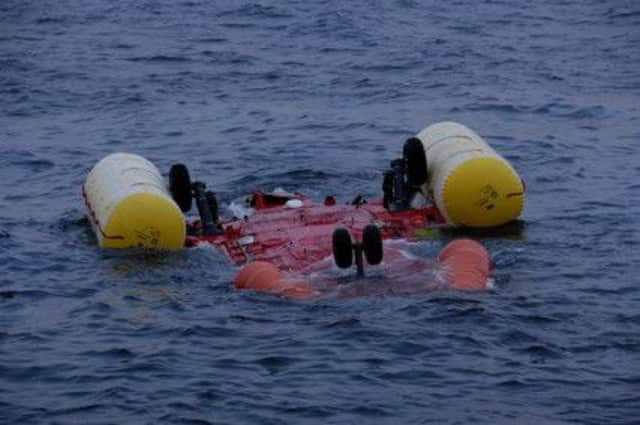No problems detected on Super Puma before crash


Routine after-flight inspections were carried out on the AS332-L2 on March 31, 2009, the night before the crash.
Engineers from Bond Offshore Helicopters checked external areas of the main gearbox for leaks, corrosion and the misalignment of pipes.
Advertisement
Hide AdAdvertisement
Hide AdHours later the aircraft suffered a catastrophic gearbox failure while transporting 14 oil workers home from the BP Miller platform.
It fell from the sky and crashed into the sea off the coast of Peterhead just before 2pm on April 1.
A fatal accident inquiry is being held into the deaths of the two pilots and 14 oil workers who died in the disaster.
Yesterday Bond deputy team leader Gordon Torquil Allen said he carried out the after-flight inspection on the aircraft the night before the crash.
Mr Torquil Allen said the inspection would have covered external checks on the main gearbox.
The Bond employee said a team of four engineers were checking over the aircraft that night and would have had to let him know if they had any concerns.
He said he had signed off the aircraft technical log which was shown to the inquiry.
Fiscal depute Geoff Main asked: “Was anything brought to your attention in relation to this?”
Advertisement
Hide AdAdvertisement
Hide AdHe replied: “According to this paperwork, there were no abnormalities on the main gearbox.”
Earlier the inquiry heard from Bond engineer Ian Underwood, who also worked in the department at that time.
Mr Underwood was shown data downloaded from the hums flight safety monitoring system aircraft card 36 hours before the tragedy.
All icons relating to the aircraft system were red rather than green.
The engineer said he believed this highlighted a “card lock up” because the helicopter had been flying for more than 10 hours.
He explained that the data showed alarms for everything listed.
Mr Underwood said he had only ever dealt with a problem with particles on the epicyclic module of an aircraft once.
He had been tasked with removing particles from the magnet on that occasion but he couldn’t remember when that had happened.
Advertisement
Hide AdAdvertisement
Hide AdMr Underwood said he had learned about the existence of the magnets during helicopter training when he joined the company in June 1999.
Mr Main asked: “Were you aware of any similar courses being carried out within Bond between 2004 and 2009?”
He replied: “I can’t remember, because I can’t remember when we lost the training department.”
Mr Underwood said staff had to undergo Human Factors Continuation Training ever two years as part of their licence requirements.